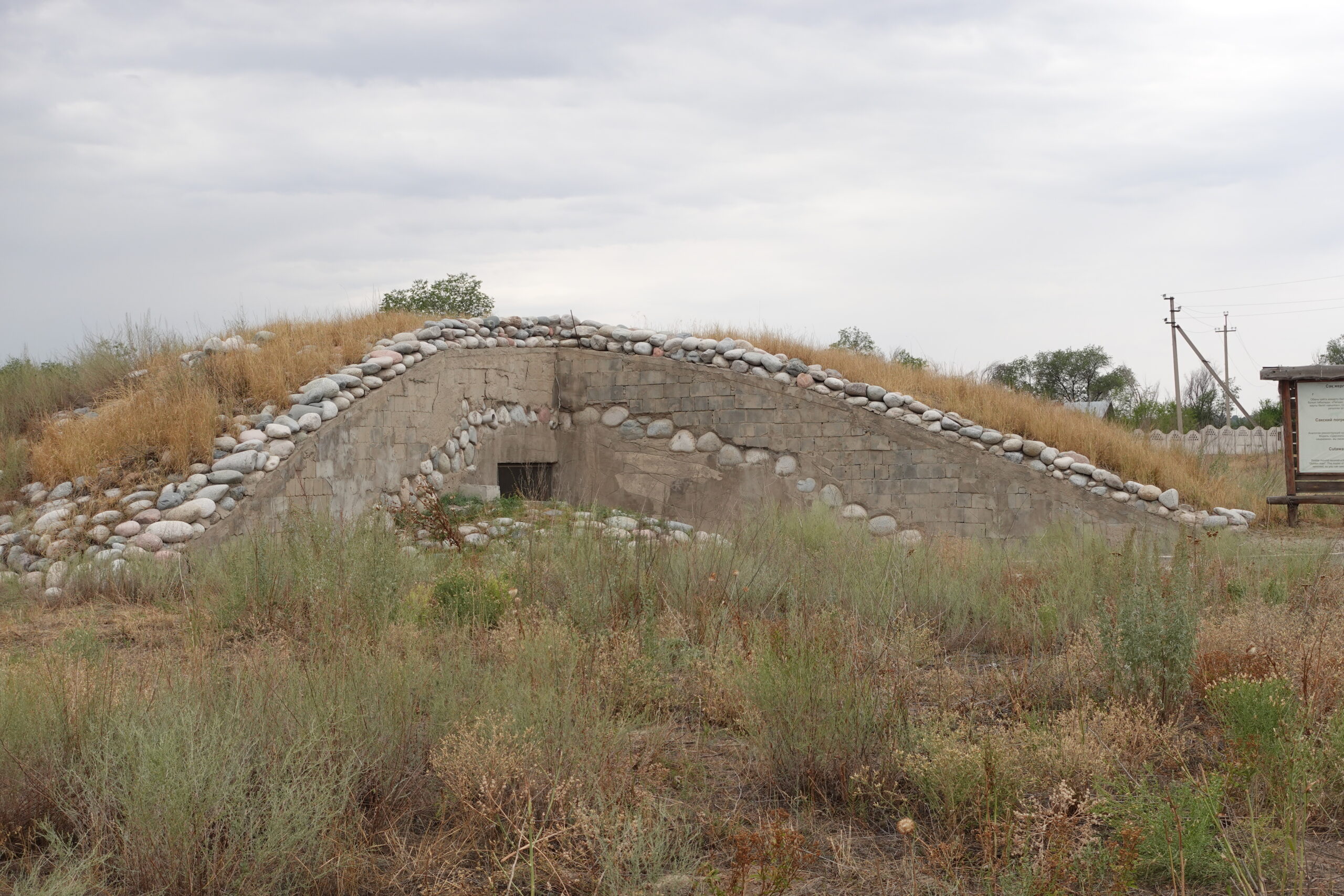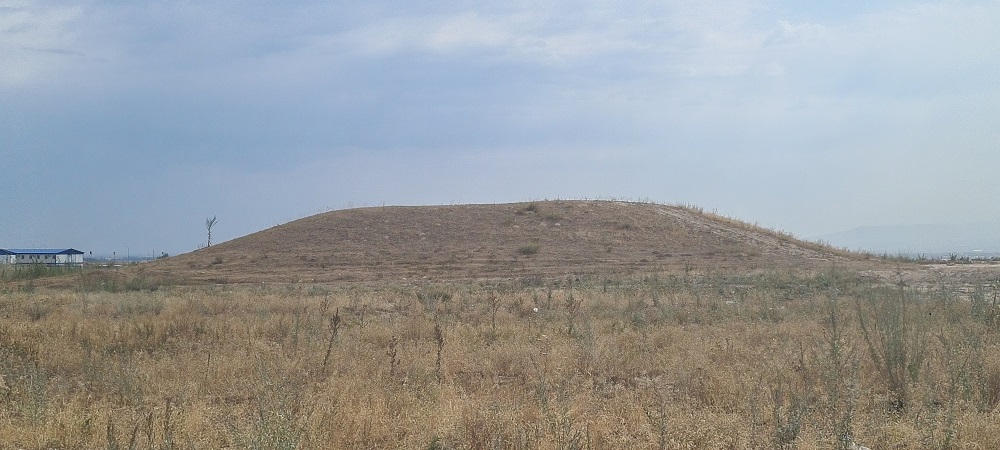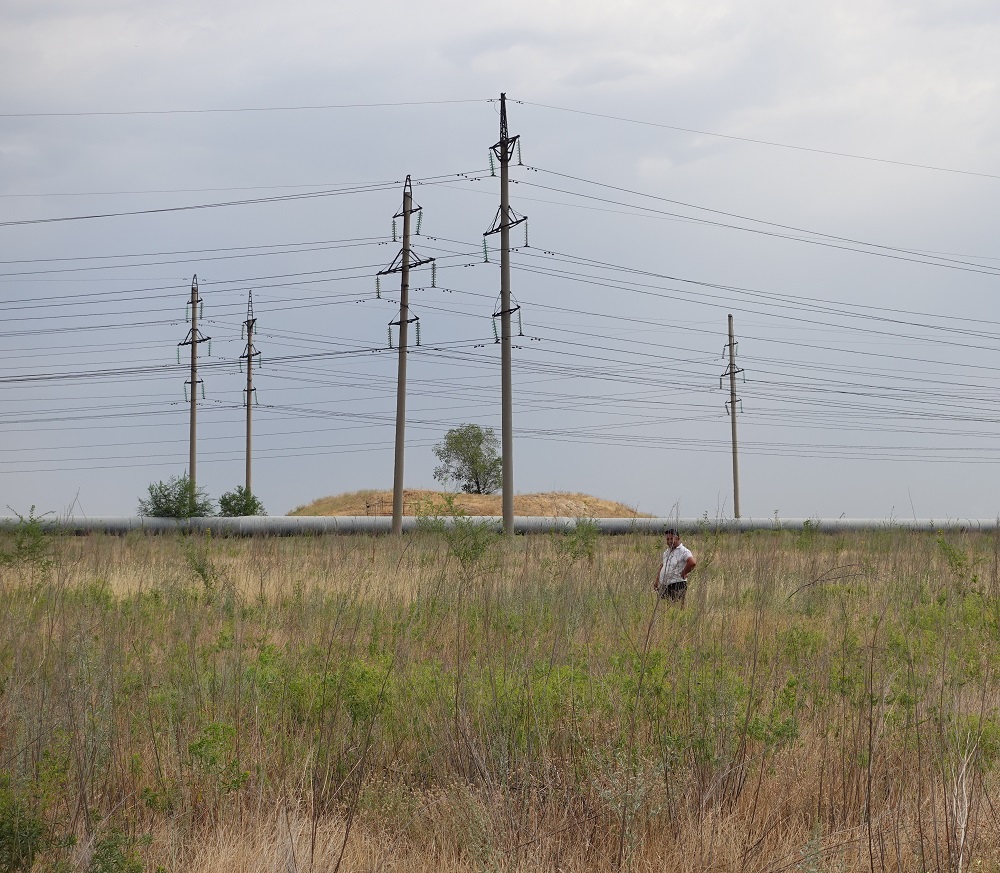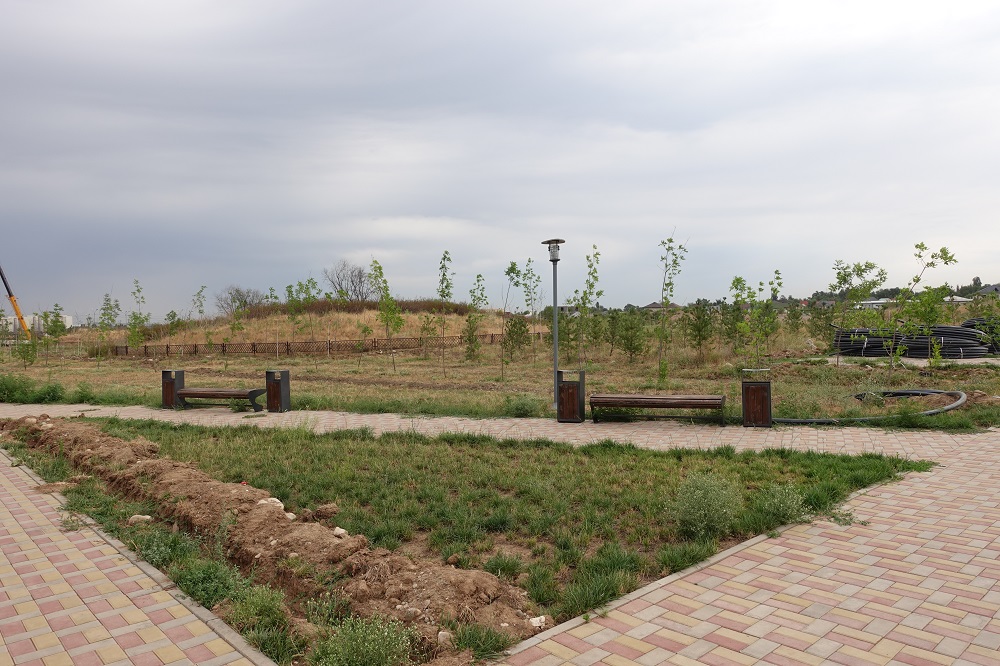There are thousands of burial mounds in Kazakhstan – monumental burial structures left by ancient residents. An Altyn Adam (from Kazakh – golden man) was found in one of Saka burial mounds in the 20th century. Later, he became the symbol of independent Kazakhstan. However, not all thousand-year monuments of history can resist the impact of urbanisation, especially in cities.
A burial mound is an artificial hill of earth built over a grave in the shape of a pyramid or a truncated cone. The most famous barrows in Kazakhstan date back to the early Iron Age. Archaeologists have found the richest barrows that date back to that very period. A barrow can hardly be distinguished from a regular hill to the untrained eye There are differences, though.

A mound is a specific feature. Usually, barrows of the Saka period have a stone cover, i.e. their top has stones on it, or sometimes the whole mound is covered by stones. It is hard to imagine how people without heavy construction machinery erected such structures 2000 years ago and more. It turns out that they filled cubic metres of earth in several stages, not at once.

A barrow is not just a burial structure, but also a landmark. Barrows often served as alerting system in the steppes: a fire made on the top of the barrow could be seen many kilometres away.
Where are barrows located in Kazakhstan?

“A known archaeologist, the head of Kazakhstan archaeology, Kemal Akishev, named several residential areas, where barrows were located,” said Murat Nurpeisov, a known archaeologist, research officer of the Centre for the Rapprochement of Cultures under the auspices of UNESCO.
They are Almaty residential area with nearly six large burial grounds. Issyk residential area with two largest burial grounds – Issyk, where the Golden Man, the richest and striking find of the 1960s, was found, and Turgen along Ili River.
There is a great number of the best-preserved barrows in Berektas area, 80 kilometres west of Almaty. A well-known gigantic Borizhar barrow is located in Syrdarya-Talas area (in Turkestan region).
“There is also the Besshatyr residential area and Besshatyr barrow located on the right bank of Ili River in the national park Altyn Emel,” Nurpeisov said. “Despite only 18 barrows there, it is a unique memorial for the Eurasian scythologists. Gigantic wooden memorial structures made of the Tian Shan spruce, numerous altars, stone stelae, a relatively intact monument were found there.”
There is one more residential area, Kegen, which has Usun barrows. All the numerous gorges of eastern Tian Shan are covered with barrows of the Usun and Hun periods. The area of Almaty and Zhetysu regions is considered the centre of royal burial grounds.
The number of Saka royal burial grounds in Almaty is comparable to the well-known Egypt’s Valley of the Kings. Egyptian pyramids are considered to be the same barrows, yet perfectly built by ancient construction workers.
Construction destroys history
It is certainly impressive that archaeological monuments that are several thousand years old can be met in Almaty, the largest metropolis of Kazakhstan. The true history literally rests under the feet. Previously Almaty could boast of a high concentration of barrows, but now most of this legacy has been lost forever.
“At the end of the 19th century, Vasily Florinsky, professor of Tomsk university, came here and found over 60-70 barrows. According to the pre-war information of local historian Boris Dublitsky, nearly 50 barrows were found,” Murat Nurpeisov said. “Currently, most of these objects do not exist.”
According to the archaeologist, there are many burial grounds of nomads of the early Iron Age and Middle Ages in Almaty. These monuments often get destroyed during construction of industrial plants and residential development.
In the 90s, there were many unidentified barrows, i.e. unknown to science, and they were not protected by the state. Now, 12 archaeological monuments are under protection, both isolated barrows, and remains of Saka-period barrows. For example, there is a huge barrow eight metres high, over 100 metres in diameter, in Tastak residential area, but it is surrounded by buildings now.
“The barrow does exist now: it is impossible to destroy such a huge one. But it is not the barrow but a strange concentration of kiosks and properties. It all took place in the 90s, when there were particular problems with protection of monuments,” Murat Nurpeisov said.
According to the Office for Culture of Almaty, some burial mounds located in the private sector have been developed in the middle of the 20th century.
“Since some archaeological sites were first listed on the Public List of Monuments of Almaty in 2010, some barrows located in construction sites and sites along the perimeter of the city were lost,” according to the Office.
Royal barrows of Almaty
According to the Office for Culture, the Public List of Locally Significant Monuments of History and Culture of Almaty (approved on March 17, 2021) has 12 archaeological monuments.
“The list of these monuments contains 62 archaeological sites: settlements, sites, burial mounds and isolated barrows. 47 barrows of the Boraldai burial mound are the part of the archaeological park “Boraldai Saka Barrows.” Other archaeological sites are in the republican, community and private ownership,” according to the Office.

‘Saka barrows located in Boraldai’ is a gigantic conservation park with the area of 430 hectares with the majority of barrows not only of Almaty, but also of all Kazakhstan. The barrows are the single group belonging to some system, which is still to be determined by scientists. The group is unique because archaeological excavations have never been carried out there.
“The area was removed from use in 2006, which was a heroic deed by the then akim Imangali Tasmagambetov,” Murat Nurpeisov said. “The point is that a more developed infrastructure could be created there according to the eco-park concept, like in Europe. Those barrows should not be excavated. Paths, gazebos should be built there and trees should be planted. While locals have bicycles and scooters, they do not have the place where they could take a ride freely, and the barrows provide a vast area. And the most important thing is that the park will remain the memorial.”
All other barrows in the valley can be seen from the highest barrow (14 metres high, 150 metres in diameter), just like the whole city. According to Nurpeisov, Sakas worshipped mountains and referred to them every time. The big Boraldai mound could be a prototype of a temple, where religious rites could be performed there. Or, maybe, astronomic observations were performed there.
“The whole system could be taken from the Chinese tradition. We can read about it in the book by Kemal Akishev “The monuments by the Saka and Usuns in the valley of Ili’ River,” Nurpeisov said. “It describes that Chinese sources rank burial structures: barrows of one size are designed for members of the royal family, another size is designed for noblemen, and the modest size is designed for ordinary soldiers. This system was probably practised here. Therefore, royal barrows are very big in size.”
Royal barrows are already on the list of tourist sites of Almaty, the museum “Centre of Saka culture” should be built here until 2025. The only disappointment is a small number of visitors in the park. City authorities relate it to the “remoteness of the site from the city centre and lack of infrastructure for tourists in the park.”
Disappeared from the face of the earth

The second largest site in the city – the burial mound “RZhV TETs-2” – is located relatively close to the Boraldai site, near the western burial ground ‘Batys’. Construction works are on near the barrows, fences have been built.
“When a modular hospital was built there for patients with coronavirus infection, a scandal occurred there: archaeologists were concerned that construction workers would destruct the barrow,” Murat Nurpeisov said. “ There were nine barrows there, and now only four largest barrows have remained, while others were excavated. The biggest of remaining ones is 6 metres high and nearly 100 metres in diameter. It has a trigonometric sign on it, and maybe it remains intact because of it.”
Major large necropolises of the Saka time were located on both sides of Bolshaya Almatinka River (flows along Almaty), on the slopes from foothills to the valley and were easily seen from any side. Barrows identified this multi-kilometre area. Most of them have disappeared already, especially barrows in the area of the fruit canning plant, in Orbita residential area, in the territory of the Botanic Garden (one barrow is still there, though).
Memorial attitude
Quite big Saka barrows were found in Nauryzbai district of Almaty. They are located in line from north to south and are southward of the Nauryzbai akimat (administration). Middle-sized barrows, nearly 50 metres in diameter and 3-4 metres high, date back to the 5-4th centuries B.C.
To be fair, the administration did not build up the area, but made a recreational area there. Barrows were kept, and a 50-cm-high fence was built around each of them to identify the monument.

Another example of a careful attitude to burial mounds is the land plot on Ryskulov and Makarenko streets, where the industrial complex is located. A Saka-time barrow is located there, right in the territory of the complex.
“It was found back in the Soviet time, and it was in a perfect condition, with flowers planted around it. The job site should have been cluttered up, covered with metal, but they knew it was the barrow, the burial place, long before archaeologists. So, they had a memorial attitude to it. It shows the level of inner culture of the people – namely, akimat and production workers,” Nurpeisov said.
All must have memorial, respectful attitude because, according to the archaeologist, prominent people who had lived in this place were buried in barrows. We should remember about it, and unique archaeological monuments should be kept for future generations.
All photos by the author

